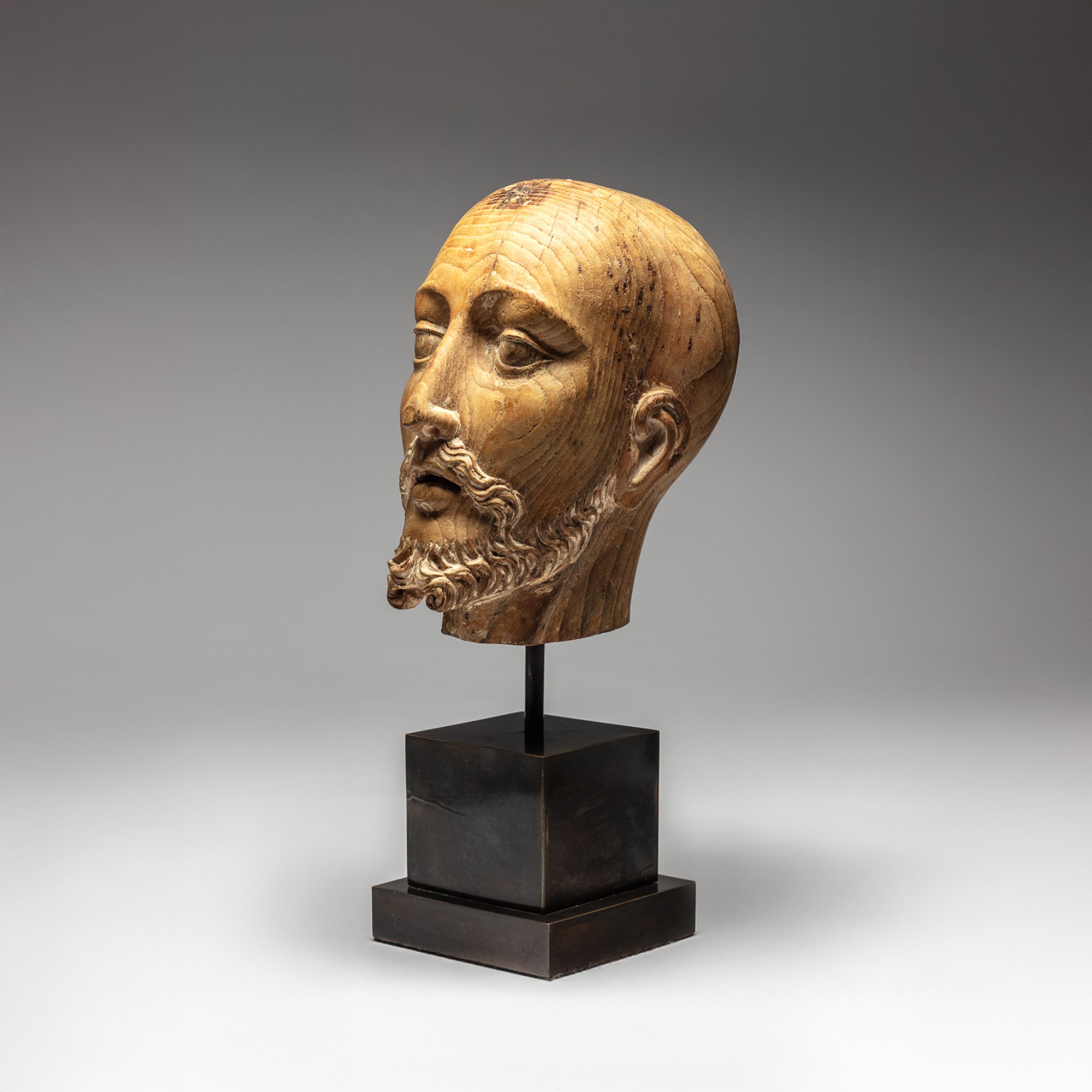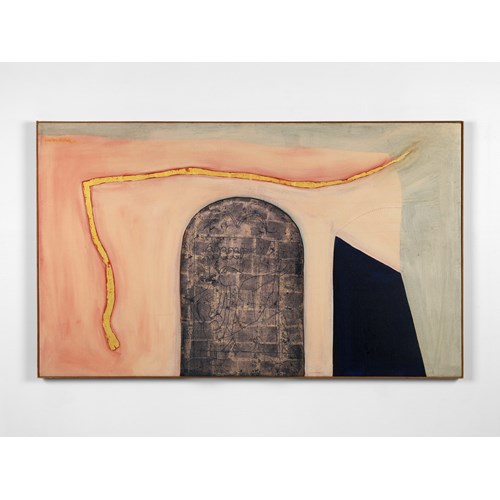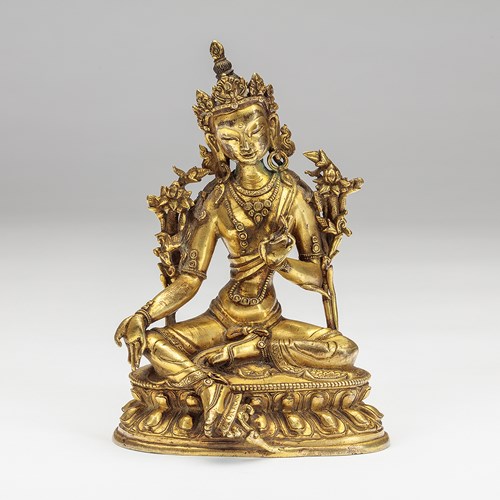Marketplace
Hispano-Filipino Carved Male Head
Masterfully carved and following a contemporary Baroque prototype originating in southern Spain, this life-size saintly male head—likely that of Christ or, alternatively, St Joseph—retains traces of its original polychromy and, as is evident from the many small holes across its smooth, bald scalp, shows signs of having once been adorned with a wig, probably made from human hair. Featuring large, penetrating eyes and half-closed lips, the image is characterised by high cheekbones, an aquiline nose, and a finely rendered, curled beard. Probably never part of a larger, complete wooden sculpture, the head was carved separately to be added to a body that might have comprised a wooden, probably bamboo structure over which the figure’s robes were draped. Such usually life-size images—called imágenes de vestir or de candelero in Spanish—were lightweight devotional sculptures intended for display in processions, to be clothed and adorned by Catholic devotees. Designed to move the faithful, to stir their emotions, and to promote spiritual meditation, these sculptures were created with striking realism as living beings, assembled with articulated limbs to better evoke movement and dramatic poses, set with glass eyes, wigs of human hair, shiny teardrops running down their faces, and ivory or bone teeth and fingernails. Alternatively, the carved head could have been attached to the bust of a sculpture of the Ecce Homo, since its imagery closely resembles that of the famous and much-revered Ecce Homo of Cebu. According to tradition, this wooden bust of Christ was discovered in 1572 in Sugbo (Cebu), unearthed from the burial site of the chieftain Rajah Carli or Carlos alias Rajah Humabon, one of those baptised upon the arrival of Ferdinand Magellan—the Portuguese explorer Fernão de Magalhães (c. 1480-1521). It was subsequently enshrined in the Church of the Holy Child of the Augustinians, the present-day Basilica del Santo Niño.1
Although similar carved heads were made in Portuguese-ruled India, particularly in seventeenth- and eighteenth-century Goa, the style of the present example bears little resemblance to these, given the greater hieratism—stemming from local sculptural forms, particularly processional Hindu idols—evident in Goan examples.2 Comparison with contemporary works made in the Philippines supports the attribution of the present wooden head to a similar origin.3 A carved ivory head of a saint, possibly depicting St Francis Xavier, in the British Museum, London (acc. no. 1981,1118.1), provides a fine example of comparable seventeenth-century Filipino craftsmanship. Based on its visual characteristics, particularly the regular waves, numerous resin-rings, and moderately large to large pores, the wood from which the present head is carved may be identified as apitong, the local Tagalog name for the Dipterocarpus spp. tree.4 Apitong, known as agagkag in Visayan, is a large hardwood tree native to the Philippines and a key timber species within the archipelago. Alongside other giant trees of the Filipino lowland rainforest, the crowns of the apitong reach thirty to fifty metres in height, with trunks up to two metres in diameter. Valued for its strong, resinous wood, apitong is still used in heavy construction, flooring, plywood, and furniture, and, while it once constituted eighty per cent of the country’s timber resources, it is now considered endangered due to deforestation and overharvesting.
[1] Astrid Sala-Boza, “Towards Filipino Christian Culture: Mysticism and Folk Catholicism in the Señor Sto. Niño de Cebu Devotion”, Philippine Quarterly of Culture and Society, 36.4 (2008), pp. 281-308, on p. 285.
[2] Manuel Castilho, Following the Divine Master in the Shores of Hindustan (cat.), Lisbon, Manuel Castilho Antiguidades, 2002, p. 51, cat. 27.
[3] Regalado Trota Jose, Images of Faith. Religious Ivory Carvings from the Philippines, Pacific Asia Museum, 1990, pp. 76-77, 79, and 82.
[4] E.E, Schneider, Commercial Woods of the Philippines. Their Preparation and Uses, Manila, Bureau of Printing, 1916, pp. 163-165.
More artworks from the Gallery









